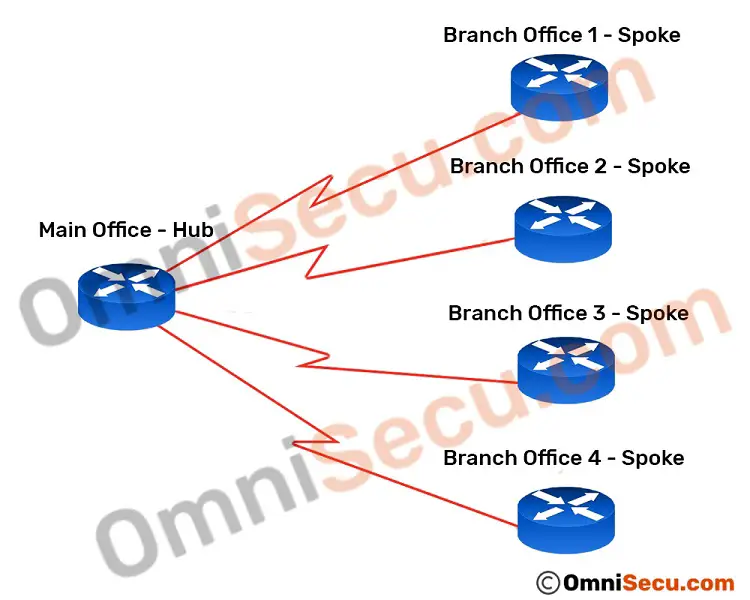Hub-and-spoke Wide Area Network (WAN) network topology
Large Enterprises have multiple business offices (physical sites) in different geographical locations. Normally, Internet Service Providers (ISPs) provide network connectivity solutions to connect multiple physical sites in different geographical locations.
In a Hub-and-spoke Site-to-Site Wide Area Network (WAN) network topology, one physical site act as Hub (Example, Main Office), while other physical sites act as spokes. Spoke sites are connected to each other via Hub site. In Hub-and-spoke Wide Area Network (WAN) topology, the network communication between two spokes always travel through the hub.

Wide Area Network (WAN) links are costly and they always involve a monthly bill payment to Internet Service Providers (ISPs) for connectivity services.
Main disadvantage of Hub-and-spoke Wide Area Network (WAN) network topology is that it may cause communication time lags. Wide Area Network (WAN) network topology also has redundancy issues. If the Main Office network fails, entire Enterprise network communication may fail.
Other Site-to-site Wide Area Network (WAN) topologies are